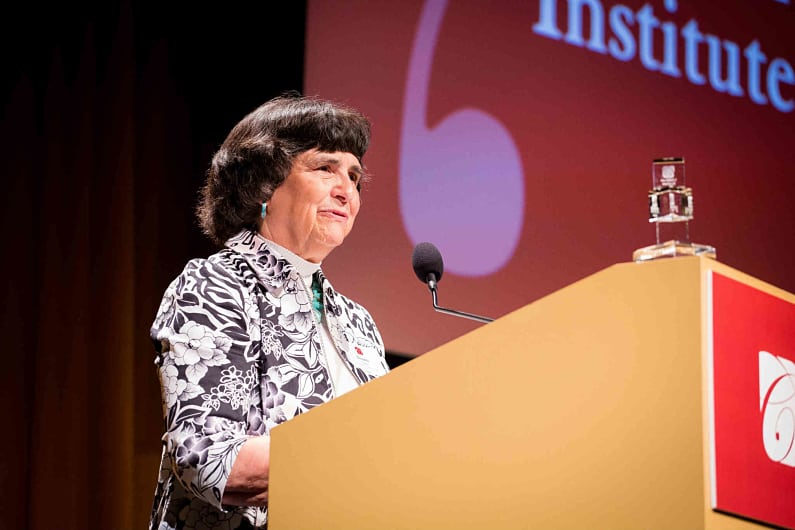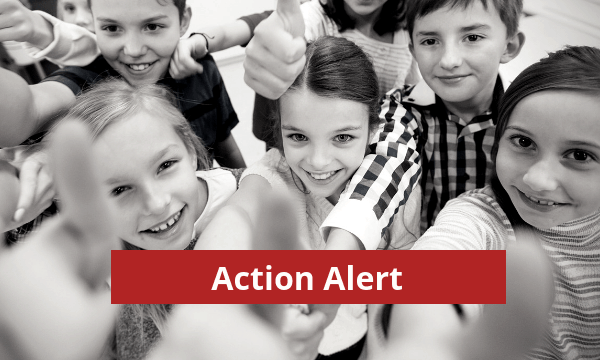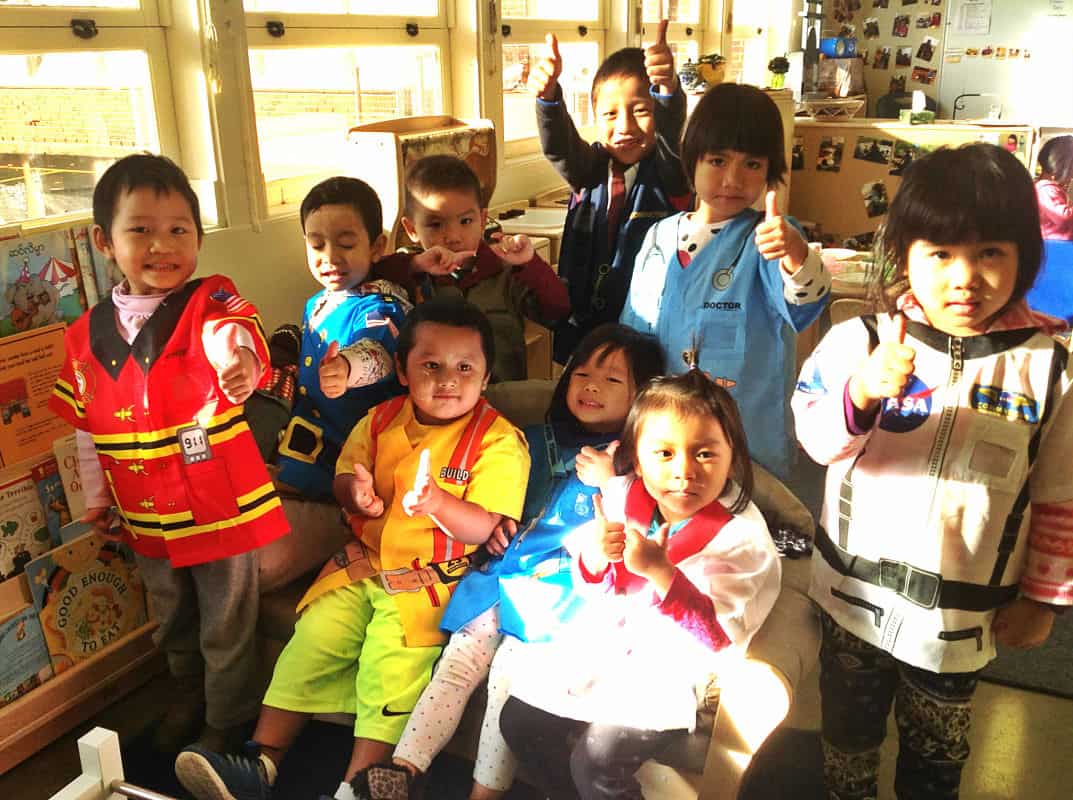Interview with public health and early education expert Donalda Dodson
 Donalda Dodson, MPH, RN, will receive the Richard C. Alexander Award at the Make It Your Business Luncheon on Thursday, May 18. Ms. Dodson is a pioneer in public health who has dedicated over 40 years to strengthening the health of pregnant women, young children, and families throughout Oregon. She works at the nexus of early learning and public health as the executive director of the Oregon Child Development Coalition, where she oversees the innovative Migrant and Seasonal Head Start program among eight other services. Ms. Dodson sat down to talk with Children’s Institute staff to talk about the intersection of early learning and public health, Migrant and Seasonal Head Start, and her definition of equity.
Donalda Dodson, MPH, RN, will receive the Richard C. Alexander Award at the Make It Your Business Luncheon on Thursday, May 18. Ms. Dodson is a pioneer in public health who has dedicated over 40 years to strengthening the health of pregnant women, young children, and families throughout Oregon. She works at the nexus of early learning and public health as the executive director of the Oregon Child Development Coalition, where she oversees the innovative Migrant and Seasonal Head Start program among eight other services. Ms. Dodson sat down to talk with Children’s Institute staff to talk about the intersection of early learning and public health, Migrant and Seasonal Head Start, and her definition of equity.
Note: This interview has been edited for clarity and length.
CI: What inspired you to pursue a career in public health?
Dodson: I have always loved babies and children. When I was a teenager I wanted to have twelve children. Knowing that I could not have twelve children I went into maternal and child health instead. I liked the one-on-one care in nursing, but public health really intrigued me because you could serve 20,000 families or 200,000 families. And, maternal and child care is where it all starts. Good, positive prenatal care, healthy babies; if you start there, then you are going to get a better outcome. Public health is rewarding, preventive, and anticipatory. Public health has been my career for 40 years or so.
CI: Migrant and Seasonal Head Start is an important program many people have never heard of. Can you tell us about it?
Dodson: Migrant and Seasonal Head Start serves the specific needs of children whose parents work in migrant and seasonal agricultural labor. In the migrant program, these are families who travel from state to state throughout the year for work. The idea first was to keep kids out of the fields, but with Head Start you can have a defined curriculum in a nurturing learning environment for young children and keep them safe. We serve children six weeks to five years old and some kids are in the program ten hours a day. The migrant population tends to be here for harvest, so sometimes our buses are on the road at 3:30 in the morning to get kids to our centers by 5:00 a.m. They may be with us from 5:00 a.m. to 5:00 p.m. It takes a lot for a family to put their small child in our custody.
CI: How do you engage with families who move so often for work?
Dodson: Head Start is two generational, it is about kids and families. These parents will come out of the fields and go to parent meetings and educational sessions, they go to parenting classes, they are just eager to learn and they are eager to support their children. About 50 percent of our families have one or more people who are not documented. Most of our children are documented, but a parent or parents might not be. Because of the restrictions on travel there is a lot of fear and we are seeing some changes in our population. Instead of entire families traveling back and forth to the U.S., children and maybe one parent will stay here while the other parent travels back to their home country because they value the educational experience so much and they know it is hard for their children to keep changing schools. Some families wait until the end of the school year before they start their migration.
We have families who pick cherries in California, Oregon, and Washington. And then they pick apples starting in Washington and go back down picking the other way. Families will call us and tell us they’re coming, “Please don’t give away my spot.” Some families have been coming for several years and the systems and connections we created help keep them informed.
The families are so engaging. Their stories, the things they struggle with. When you think what they do in order to be successful for their children. Agricultural labor is very skilled. It’s not easy work and if you want to make a living out of it, you have to be skilled.
I’ve seen such growth in parents so they understand the system and the resources that are available so they can access those resources and what they can be doing to assist their kids. All that dialogue taking place and the parents absorb it, learn and develop leadership skills. By the time their kids transition to kindergarten, so many parents are ready to take leadership positions in the school as well. It’s very powerful. I’ve seen parents come into a policy council meeting and they are very quiet and timid and they don’t know what’s going on. And two years later, they’re taking minutes and they are the ones that are representing other parents at a national meeting.
CI: How are early education and public health connected in your work?
Dodson: Well in maternal and child health, you are working with pregnant women, children, and families. In early learning, you’re often working with pregnant women, children, and families, so there is a natural connection. The first three years is about growth and development and being aware of what that is and helping parents be aware of what growth and development looks like for young children and stressing the importance of early learning. That’s the same with health. Whether in classroom or clinic setting, it is about healthy development. It’s a great merger for me. In public health and early education, we bring people together to address important issues that have wide-ranging effects on communities. We try to make sure families have the resources and information they need to make informed decisions so they can be successful. If your tummy is growling or you have an abscessed tooth, you cannot concentrate enough to learn. Early education and health are inextricably tied, they just go together.
CI: What can we do to better serve kids who have the greatest needs?
Dodson: Well, the minute you said that, It’s equity. To me, its understanding what equity is. We have to give the most vulnerable children more so they can have the same foundation and get to a place of equality with their peers. Giving everybody the same thing when there is a specific need to be addressed isn’t a solution. Let’s take our migrant children; if they don’t have quality, nurturing learning environments because they have been traveling all the time, we need to make education accessible to them. Give them more in their early years so when they get to school, they can do their best and have an equitable education. Maybe you need assistance with food so you can have good nutrition. Maybe you need assistance with housing. No matter how hard they work, some people don’t make enough money to find and keep affordable housing. I think we need to address the needs of young children and families who need support. We need to listen to them. Many of these families are very resourceful, but they don’t have access and may need some help. I learned this lesson a long time ago when I was working with a family. The mother was working full time, the father was working full time, they had two children and they were still at poverty level. They were working eight and ten hours a day. It wasn’t that they weren’t trying. We need to make sure basic needs are met so all kids get a great start in life.
We hope to see you at Thursday’s Make It Your Business Luncheon where you can hear more from Donalda Dodson and our keynote speaker, Professor Sean Reardon. He’ll discuss the research that led him to become a strong advocate for investing in early childhood education.


 Children’s Institute invited state legislators to visit preschools in their districts to see the benefits of early learning first-hand. Legislators visited a wide variety of preschool classrooms where three and four year-olds were learning the pre-academic and social-emotional skills essential for kindergarten readiness.
Children’s Institute invited state legislators to visit preschools in their districts to see the benefits of early learning first-hand. Legislators visited a wide variety of preschool classrooms where three and four year-olds were learning the pre-academic and social-emotional skills essential for kindergarten readiness. On Wednesday, February 15, renowned early education scholar and advocate
On Wednesday, February 15, renowned early education scholar and advocate